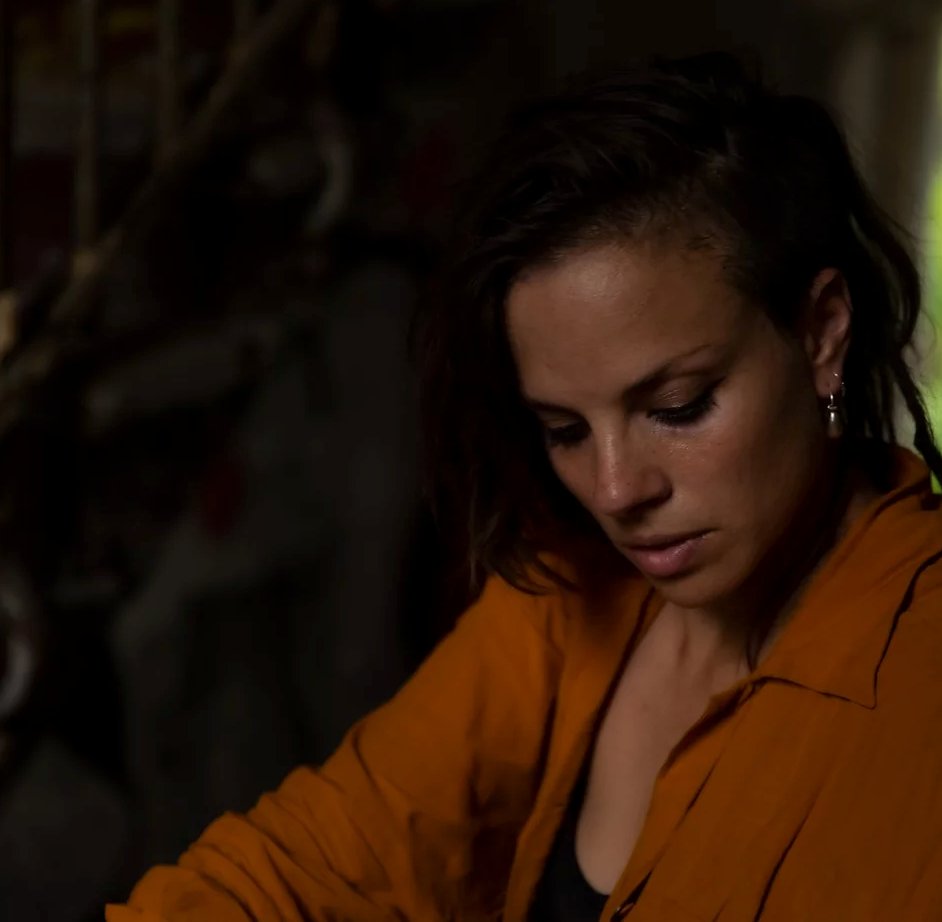– Azzie McCutcheon – Jan 2022
MADE IN BERLIN Residency – supported by Berlin Senat
Azzie McCutcheon is a Berlin based dance artist interested in performance as transformation: a place for the sharing, exchanging, understanding and developing of human experience. Creating as dancer, choreographer, movement practitioner and teacher, her work spans different performative styles including performance installation, physical theatre, dance comedy, dance film, contemporary dance and fusion belly dance. Recurrent themes of research include: perception, blurring boundaries, the spaces in between, the uncanny, creating character and narrative through physicality. Most of her work aims not to create linear narrative, but rather endeavours to invite the possibility of engaging or affecting an audience on a visceral level.
Introduction
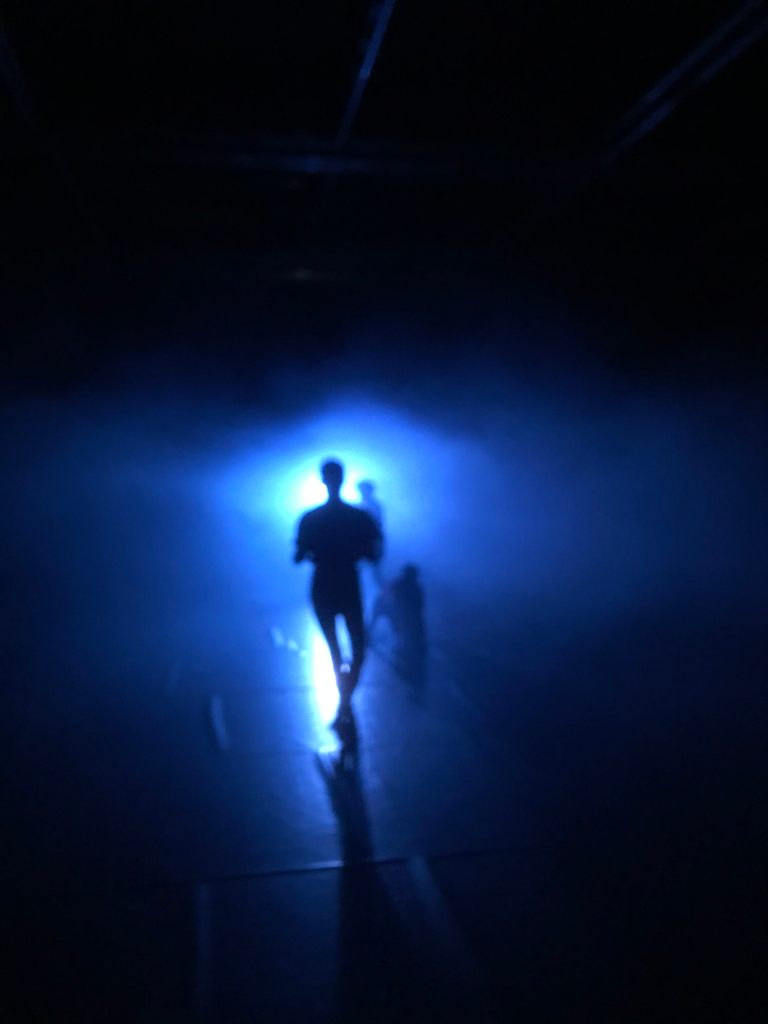
I decided to use this residency to continue a project called Limbus (working title). The project began during previous residencies where I explored themes related to the need for control in unfamiliar situations, which in turn led me to research ‘the uncanny’. I am interested in the uncanny as:
“the familiar made strange, or the strange rendered familiar” Sara Meyers
and
” a mental state of projection that precisely eldies the boundaries of the real and the unreal in order to provoke a disturbing ambiguity, a slippage between waking and dreaming” Anthony Vidler
I recounted discoveries made previously and pulled together themes, moments and references that interested me the most:
- Blurring of form using fog and backlight
- Chair image
- recorded voice: experiences of unfamiliar situations and ‘dislocated mouthing’
- ‘searching’ movement quality
- slow collapse
- Josephine Machon’s ‘(syn)aesthetic performance’: coming from the Greek ‘syn’ meaning ‘together’ and ‘aisthesis’ meaning ‘sensation’ or ‘perception’, ‘(syn)aesthetics’ refers to a fusing of the somatic and the semantic in the creation, reception and analysis of performance
- ‘Uncanny valley’: the relation between an object’s degree of resemblance to the human being and the emotional response to the object (humanoid objects that imperfectly resemble actual human beings provoke strangely familiar feelings of eeriness and revulsion in observers).
I decided that the focus for this residency was to work with sound and light and posed the following research questions:
- How can interactions of sound, light, and movement/the body blur boundaries of what appears:
- Familiar and unfamiliar?
- Recognisable and unrecognisable?
- Human and non-human?
- What is found in the spaces in between?
- How can we create a sensation of the ‘uncanny’ for an audience?
During this residency I worked with sound artist Diane Barbé: https://dianebarbe.com/ and light designer Thais Veiga: https://thaisnepomuceno.art/
The Human Scale
I thought about what perceptible visual and aural things make a human being recognisable to us as human. I listed:
- Gesture
- Voice
- Facial expression
- Gait
- Posture standing and sitting
As a way back into the research I decided to continue working with a scene I had previously created where I am sitting in a chair and moving through different gestures, facial expressions, and sitting positions. I worked with a particular movement quality I had already developed, and worked with how the above could be abstracted through this quality. I also continued to work with ‘dislocated mouthing’; mouthing speech of a recorded voice being played externally.
I continued by researching the scale of human to abstract, using an improvisation task of exploring the gestures, facial expressions and positions in this movement quality at changing intensities of 0-10: 0 being naturalistic/human, and 10 being the most abstracted version. Inspired by the concept of uncanny valley, I was interested to find the ‘sweet spot’ at which this figure appears, through its movement, mostly recognisable and familiar as human, but just a little strange, or somehow, ‘off’. After this I created a graph that could also be used as a score:
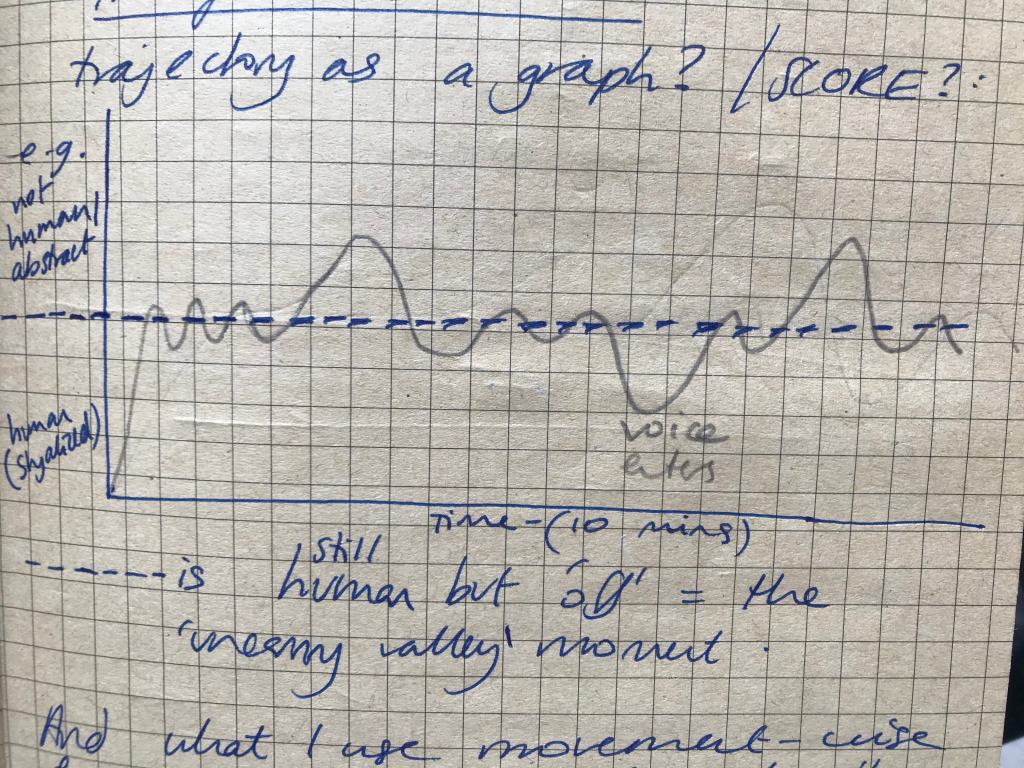
Alongside these improvisations I worked with Diane in order to find how we could sonically create a sensation of slipping in and out of the voice appearing (un)recognisable and (un)familiar. We discussed how important language is in how we perceive voices as recognisable and human, and yet also our aural conditioning to the uniqueness of the human voice that we can also perceive an emotionality or tone even in a made up language (e.g. songs by Elizabeth Fraser and Cocteau Twins: https://www.youtube.com/watch?v=NhGoZLudKyk).
We explored how the voice could be introduced into an otherwise abstract soundscape – coming in and out of aural perception, or muffled in a way that one can recognise the voice as human, but not clear words or language. Our aim was to echo the visual stimulus in a way that might induce a sensation that the perception of this figure is slipping between (un)recognisable and (un)familiar.
Ambiguity and Associations
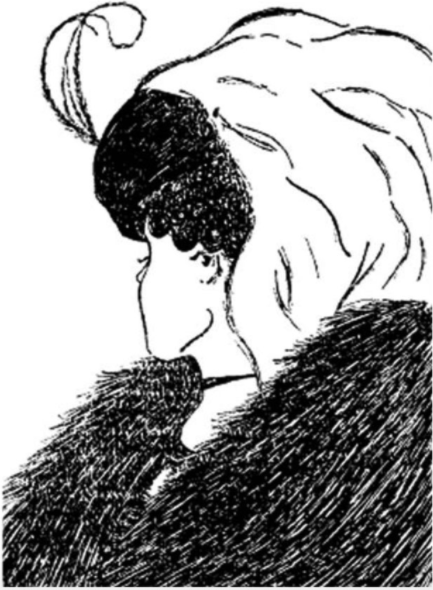
A large part of the residency was spent working with movement and sound in the research and creation of ambiguous visual and sonic images.
I began working with a large piece of black heavy material to research how the form of the body can instantly be changed, and suggestions of other more ambiguous forms can emerge (especially with the use of a backlight as it blurs/merges the forms of whatever is in front of it together). I researched what is was to try and create an amorphous creature with my body fully emerged in the fabric, as well as what it was for half the body to be visible. Here Xavier Le Roys Self Unfinished (https://www.youtube.com/watch?v=G3rv1TeVEPM) comes to mind, and the question arose of whether it is possible that the observer can switch between perceiving a body in a fabric, or a strange Praying Mantis-like creature; like in the famous ambiguous figure picture above.
During another improvisation with the fabric I picked it up and carried it across the space. Immediately the image or character emerged for me of some kind of farmer or labourer, and I realised how visual moving images and physical actions can also enable a certain human association through context, created through our anthropological and social history.
With Diane we worked with ambiguous sounds and the associations they create. Diane had many recordings of sounds that were made electronically but sounded natural, or vice versa. We experimented with these sonic and movement images, exploring what associations were produced audio-visually. The aim was to play again on the boundary of perception: how could we create a slippage between e.g. an amorphous creature and a human labourer, or machinery and frogs singing?
During an improvisation with Diane I started pulling the fabric up and down repeatedly, and she was playing a chorus of frog sounds. The way she manipulated the sound alongside this action brought the image of a ‘washerwoman’ to mind, and the frogs began to sound to me like a ‘workers song’. I couldn’t tell which came first: whether the physical action/image made the sound appear as a workers song, or the sound created the association of the image as a washer woman. And, at the same time, the repeated action was reminiscent of machinery and the sound then appeared like rusty cogs turning. This opened up the potential for how we could begin to work audio-visually within our aims.
I also worked in the final week of residency with Thais to investigate how I could work with light within my aims. We didn’t have much time to explore many things, but one discovery was the use of multiple lights directed at the body, flicking between dark green and blue. We worked with flicking between the lights and the shadows they created, aiming for moments in which the shadow of the body blurred its form, or flickered, creating a constantly morphing or shifting form.
Pareidolia and a triangle becomes a mountain
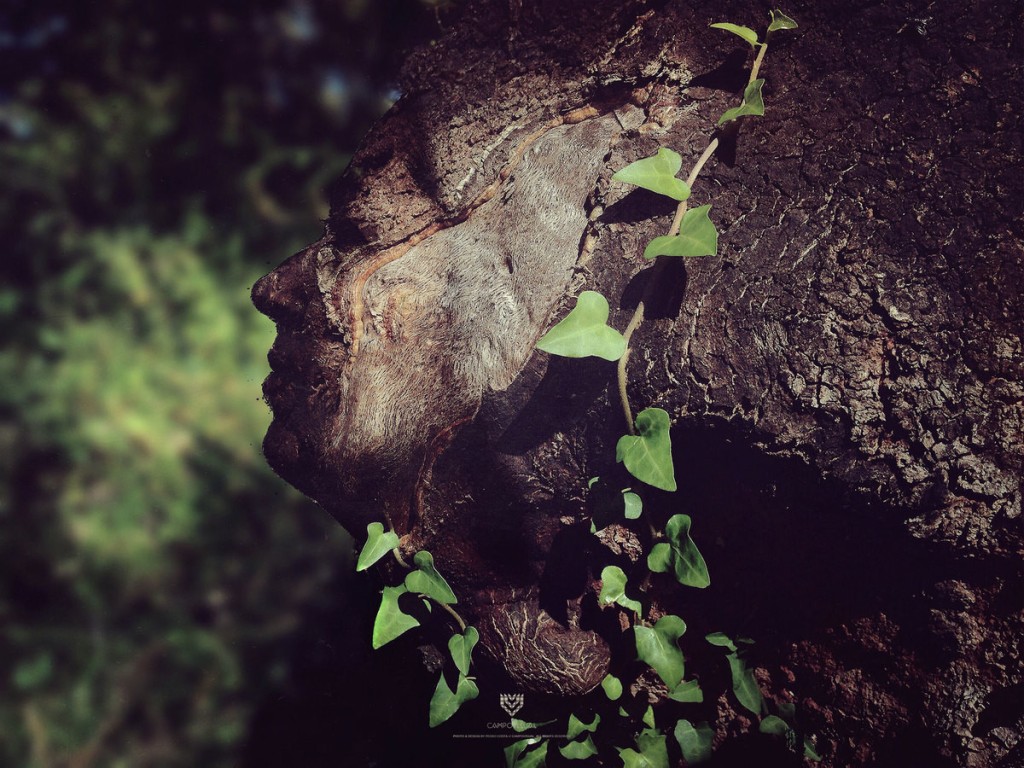
An important discovery during the residency was the phenomenon of ‘Pareidolia’: the tendency to perceive meaningful forms in suggestive configurations of ambiguous stimuli – for example seeing faces in clouds or the bark of a tree, or even in machinery. Upon discussing this with Diane she introduced me to Diana Deutsch, a psychologist known for researching auditory illusions in speech and music/sound. Amongst her discoveries are pareidolia sound illusions; where people hear words in random sounds, and that people hear different words from one another and different depending on the particular day or mental state. What I noticed listening to these sounds was that as you listened, the words you perceived shifted over the e.g. 2 minutes you listened to them (and were different on each day I heard the same sounds): https://www.youtube.com/watch?v=kB0I5x_Skzg We also realized that a similar effect occurred with some sounds that Diane introduced – for example a sound that first sounded like an electronic noise but over time (even though the sound didn’t change) it shifted within my perception to become the sound of a hovering insect.
We incorporated these findings into the work, investigating how we could combine audio and visual stimuli in a way that could induce a ‘pareidolia’ like effect or experience. We were inspired here by Éliane Radigue’s statement that slowly a triangle can turn into a mountain: when something changes slowly it can change without you perceiving the change happening. We wanted to create this illusion, so worked with slow movement and slow sound transition, but also in using sound to create a specific atmosphere that encouraged a ‘trippy’ state in which perceptual shifts are more inviting, in order that an audience might ‘zone out’ and in again during a transition between images.
We therefore worked with these images audio-visually and dramaturgically in order to find what combinations might induce these kinds of perceptual shifts: experimenting also with using less complex visual images during a longer sound illusion phase in order to allow the audience to zone more into the sound and pareidolia effects that they might encounter by doing so. During this particular sequence we also explored the use of darkness and a strobe light using single flashes at a low frequency in order to re-establish darkness and allow the potential for the image in front of the audience to be ‘burnt onto the retina’ during the flash, adding to potential for inducing a perception of ambiguous images.
Reflections
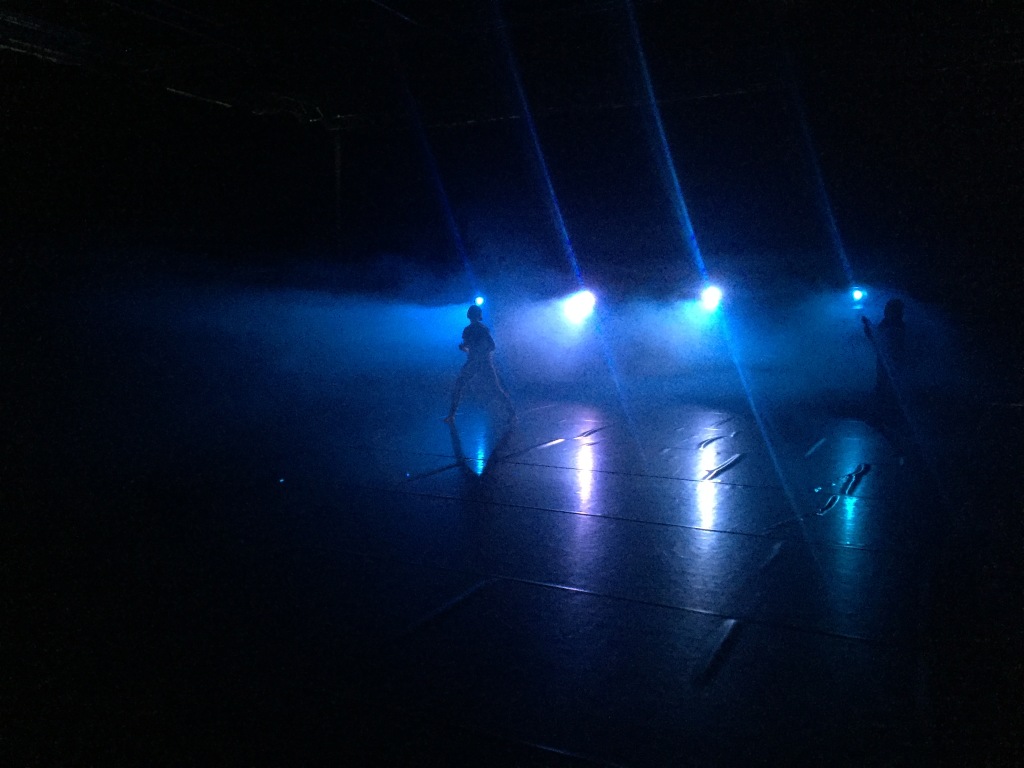
During this residency my key findings were:
The creation of what I have labelled ‘the human scale’ and how playing around the transition point between movement appearing naturalistic or abstract has the potential for creating an uncanny affect. I would like to continue to work deeper audio-visually with this in order to further research how this works with the recorded human voice, through aural effect and ‘dislocation mouthing’.
How the use of ambiguous movement and sound images can offer shifting perceptions of familiar/unfamiliar and recognisable/unrecognisable.
How movement and sound can create specific associations and therefore perceptions, and how when used together they can affect the perception of one another. At first I was trying to offer a shift of perception through a visual movement image changing from one thing to another, or a sonic image changing from one thing to another. I realised however that the key is to find how these images can work truly audio-visually: to research more carefully constructed audio-visual combinations that may therefore offer much deeper ambiguities and perceptual shifts for an audience.
I also realised that perhaps as I am someone who is fascinated in perception, when I look for example at the ambiguous figure above, I find it easy to switch constantly between the two possible perceptions. However feedback suggested that for many people once you see something you cannot ‘un-see’ it. This is a matter I find frustrating, and would like to research more deeply therefore how I can create images that can stay for a longer time imperceptible, unrecognisable or ambiguous enough that they can create an uncanny effect for an audience. I would like to research more how the use of light (or lack of) and audio-visual combinations can allow the space for an audience’s imagination to create the kind of ambiguity and uncertainty in perception that encourages an uncanny sensation to be experienced.
The questions I therefore leave this residency asking, hopefully to be answered in the next research phase of this work:
- How can I use ‘the human scale’ to create movement that creates the most interesting uncanny effect for an audience, and how can this work audio-visually (using recorded human voice)?
- How can I use specifically constructed combinations of movement and sound audio-visually to create shifting ambiguous perceptions of images?
- How can I use the concept of pareidolia, time/duration, dramaturgy, and the creation of specific atmospheres to aid in these perceptual shifts?
- How can I use movement, sound and light to create the space needed for an audience to create individual ambiguous perceptions that may lead to a sensation of the uncanny?

